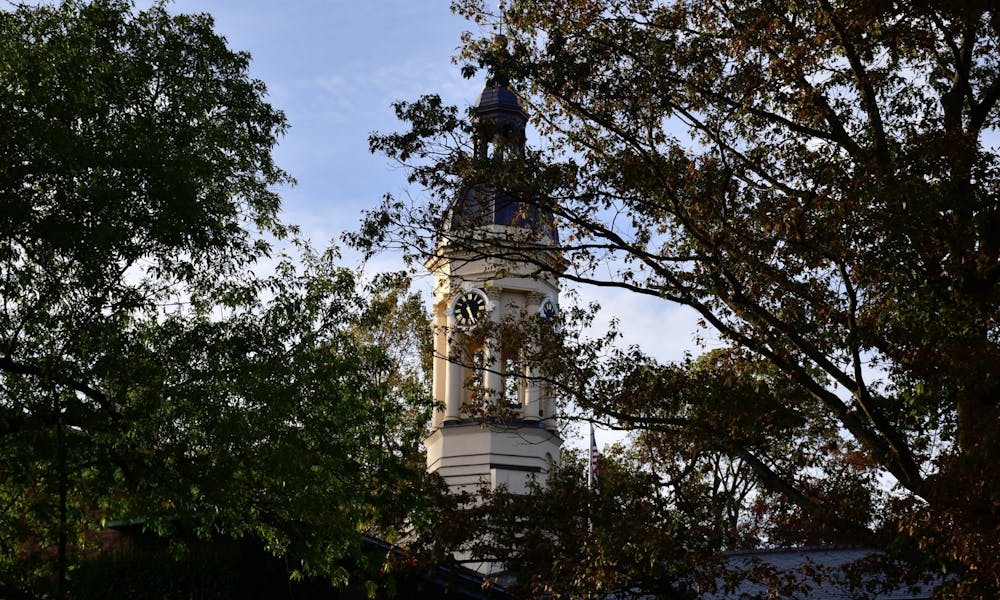For the 11th year in a row, Princeton University has ranked first place in the U.S. News and World Report’s annual Best National University Rankings. The University also ranked third on Forbes Magazine’s America’s Top Colleges list, an increase from its previous placement of fifth in 2019.
Tied for second place are Harvard University, Columbia University, and the Massachusetts Institute of Technology, whose rankings were second, third, and fourth, respectively, in the 2021 rankings.
For the other members of the Ivy League, Yale University follows close behind at fifth place, while the University of Pennsylvania stands at eighth, Dartmouth College at 13th, and Cornell University at 17th. Outside the Ivy League, Duke University’s position jumped significantly, securing a top 10 spot at ninth, while it ranked 12th in 2021.
The University ranked first in “Senior Capstone,” defined as a culminating project that students have to complete before graduation. It also ranked in the top 10 in five other categories — sixth in “Learning Communities,” fifth in “Undergraduate Research/Creative Projects,” eighth in “Computer Science,” and third and fourth respectively in “Best Undergraduate Teaching” and “Best Value Schools.”
“We are always grateful when the University is recognized for the steadfast pursuit of its goal to be a world-class research institution with a distinctive commitment to teaching at the undergraduate and graduate level,” University Spokesperson Ben Chang wrote in an email to The Daily Princetonian.
Heather Madsen ’24 told the ‘Prince’ that while the University provides “a lot of opportunities that would be inaccessible without this institution,” she still sees “flaws with the American education system.”
“I think that the rankings are just one barometer of Princeton’s value,” she said. “They definitely should be taken with a grain of salt because the holistic experience of Princeton University cannot be encapsulated by a single number.”
One change to the U.S. News’ ranking method this year included “more averaging of Best Colleges ranking factors” — average class size, faculty salaries, and two indicators of student debt — through a two-year average instead of just the previous year’s data.

“This reduces the year-to-year volatility of these ranking indicators,” explained U.S. News.
Furthermore, in light of the growth of test-optional policies during the COVID-19 pandemic, U.S. News lowered a threshold for the percentage of incoming students who submitted standardized test scores. In previous years, 75 percent of new entrants needed to submit SAT/ACT scores, or the institution would be penalized in the ranking for the standardized test category. This year, only 50 percent of new entrants needed to submit test scores before institutions were penalized in the rankings.
Forbes Magazine’s America’s Top Colleges rankings also changed their methodology to take into account the effects of the COVID-19 pandemic. The magazine did not publish a list in 2020.
Following the change in methodology, the University of California, Berkeley, was named the highest-ranking institution. This was the first time a public university has taken the top position — Harvard University held the coveted spot from 2017 to 2019, while Berkeley placed 13th in 2019.

Yale ranked second this year, followed by Princeton, Stanford, and Columbia.
For this year’s America’s Top Colleges, Forbes placed the heaviest weight on alumni salary (20 percent), while allocating 15 percent to factors such as debt, return on investment, graduation rate, and placement on the Forbes “American Leaders List.” The new methodology also diverged from Forbes’ previous system by now taking into account “the average number of years it took students to pay their college costs.”
Forbes explained this refined methodology as a product of reflection during the COVID-19 pandemic and its impacts on higher education. The magazine now considers the accessibility of education for lower-income students by considering the percentage of undergraduate recipients of Pell Grants in each institution.
Pell Grants are federal scholarships that are provided to students from low-income households to fund their college education, and do not need to be repaid. At Harvard, 12 percent of undergraduates receive a Pell Grant, while Pell Grant recipients make up 27 percent of Berkeley’s student body.
At Princeton, 22 percent of the Class of 2025 are eligible for Pell Grants, likely contributing to its third place ranking.
However, for U.S. News’ “Top Performers on Social Mobility,” which considers universities that have “large[r] proportions of disadvantaged students awarded with Pell Grants,” the University ranked 192nd.
According to U.S. News, such lists are in a process of “constant refine[ment].” The company also had to make use of data that “pertained to fall 2020 or earlier” in lieu of more recent data, as a result of complications from the pandemic.
Forbes Magazine also reflected on how they only “rank a slice of America's colleges and universities,” and “elite private institutions still scored high” despite 80 percent of undergraduates in the nation attending public schools.
Hadley Kim is an associate staff writer interested in reporting on the international student experience. On campus, she is also involved with the Princeton Debate Panel and The Princeton Diplomat, and intends to major in East Asian Studies. She can be reached at minjuk@princeton.edu or @hadleymkim on most major social media platforms.








